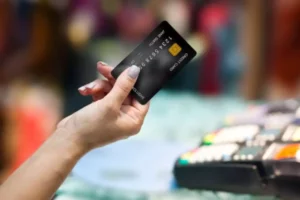Content
- Drawback #2: You’re exposed to human error
- Disadvantages of Three-Way Matching for Businesses
- What is the 3-Way Match Process in Accounts Payable?
- How can three-way matching benefit your business?
- Invoice Parsing to Automate Invoice Processing in 2023
- Why is 2-way matching important in accounts payable (AP)?
- What is three-way matching in accounts payable?

When you should be focused on your bottom line, nothing can take the wind out of your sails like manually matching printed POs with invoices and packing slips. Investigating every invoice can be daunting, and unless systems are highly organized it can take hours to track down the correct documents. To ensure that every order is complete, 3 way invoice matching highlights discrepancies or inconsistencies between any of the critical documents listed above. The receiving order specifies that a receiving officer has accepted the goods delivered by the supplier, and records the quantity, the delivery condition, and any other points applicable to note. This document is forwarded to the accounts department once the receiving department has completed their due diligence and recording.
Genaro Alberto Olivieri Enjoying Dream Run, Paying Tribute To His … – ATP Tour
Genaro Alberto Olivieri Enjoying Dream Run, Paying Tribute To His ….
Posted: Thu, 01 Jun 2023 03:01:12 GMT [source]
The 3-way matching process is critical for keeping business finances healthy. Not only do businesses need a consistent supply of goods/services to keep the business running, but also need mechanisms to protect against overpayment and financial fraud. For 3-way matching to be effective, the accounts payable team needs to spend a substantial amount of time and effort in matching and processing invoices. Automating the 3-way matching in accounts payable relieves the team from labor-intensive verification and matching tasks and improves the accountability and accuracy of matching. By automating the matching process, the AP teams get more time for productive work, and invoice and payment processing can be done faster and more efficiently.
Drawback #2: You’re exposed to human error
While this is great news of course, there are still many things that can go wrong if the invoice matching process is done manually. Inaccurate data, lengthy approval, and payment flows, lack of concentration of employees, and fraudulent documents make manual two-way matching a fragile process. A company orders raw materials from a vendor, and the vendor sends a purchase order confirmation. When the materials are received, a receiving report is completed, and the invoice is received. A company orders office supplies from a vendor, and the vendor sends a purchase order confirmation.
There are 50,000 brochures per pallet, the same as the number requested and shown on the supplier’s invoice. A properly checked supplier’s invoice will have precise numerical matches between the purchase order and the receipt. An invoice is held and routed for proper review if the matching tolerances are not met. Accountants are critical in ensuring that the process is carried out effectively and that discrepancies are identified and resolved.
Disadvantages of Three-Way Matching for Businesses
Replacing their manual 3-way matching with an automated process allowed them to process millions of invoices with ease. This move brought the company better ordering continuity, improved leverage with suppliers, and considerable cost savings. Many businesses have trouble keeping track of which suppliers are approved, where everything was ordered from, and when deliveries are due. Ordering from multiple vendors on different sites and completing several checkout processes can lead to disorganization and confusion. Expenses from manual invoice matching could amount to thousands or even millions of extra dollars in processing costs, all while trying to avoid overpayment.

The main difference lies in the documents requiring confirmation before payment approval. The goal is to look for any discrepancies in the purchase order, receipt, and invoice and, if found, deal with them on time. This stage saves organizations from overpaying and from paying for things they never received or perhaps never even ordered. The first step is gathering purchase orders, goods received notes and invoice information. This number is uniform across all three documents pertaining to the purchase. Once the PO, GRN, and invoice are gathered, the information they contain is verified.
What is the 3-Way Match Process in Accounts Payable?
To mitigate the invoice fraud risk, many business owners and finance departments use 3-way matching. With a three-way match, you can confirm that the business’ established purchase approval process was followed. When an invoice, PO, and receipt are all compared, it’s much easier to double check your work. It also increases visibility, because it is more clear where company money is being spent. And when you find discrepancies, you can act on them as needed, such as by reaching out to the supplier to correct the price. The three-way match compares what has been ordered with what has been received.

In accounts payable, three-way matching is an internal control process that ensures invoices, purchase orders, and receiving reports all have consistent line item details. Manual matching of thousands of supporting documents can be time-consuming, expensive and extremely labour-intensive. AP teams end up spending lots of man-hours manually hunting for every invoice, PO and receipt! Delays and errors force the accounts payable team to work overtime and could also bring on penalties for late payments.
How can three-way matching benefit your business?
Once all offers have been collected and compared, the winning printer will be chosen, and an order will be made with them. In all the above scenarios, if discrepancies are found, Accountants will work to reconcile the difference and rectify the errors before making any payments. In a 3-way match process for accounts payable, accountants play a critical role in https://www.bookstime.com/articles/what-is-3-way-matching-in-accounting ensuring that the process is carried out effectively and that any discrepancies are identified and resolved. It also allows you to catch errors or discrepancies that may go unnoticed. Manually doing the matches exposes you to mistakes and misinterpretations. Additionally, the documents could be misplaced, lost, or damaged due to poor handling or storage issues.
- Companies that choose to employ three-way matching do so to reduce mistakes, catch illegal activity, and save money.
- Alternatively, it makes sense to add an extra step of personal inspection for a newly contracted vendor that’s not well known on the market.
- Certain links in this site connect to other websites maintained by third parties over whom BILL has no control.
- Confirming documents on time and paying invoices promptly makes business partners feel valued.
- While the purchasing department creates and issues POs, the receiving department creates the reports regarding what physically arrives at the warehouse.
The chances of fraudulent activities are also significantly reduced with so many checks and balances in place. This ensures no extra charges are incurred without your business knowing about it. Traditionally, the purchase order would be filled out on paper and given to accounting. The vendor would then invoice the company, and at some point the product will be shipped out. Upon receipt, a receiving clerk will (hopefully) verify the quantity of the product received, and give the packing/receiving slip to the accounting department. In some cases, a supplier takes time to fully complete an order over multiple deliveries.
Invoice Parsing to Automate Invoice Processing in 2023
To get the most out of three-way matching, it’s important to use it as a policy. Here are some tips about how a company can make three-way matching more efficient. Two-way match is used to compare the invoice received from vendor with the Purchase Order. A business sends a purchase order https://www.bookstime.com/ for a set of new office furniture for the price of $10,000. The vendor receives, reviews, and accepts the purchase order and then delivers the requested furniture. The 3-way match procedure is the superior internal control option compared to the 2-way and 4-way match procedures.
- It includes the supplier’s contact information, a description of the goods or services provided, payment details, and the total owed.
- And when you find discrepancies, you can act on them as needed, such as by reaching out to the supplier to correct the price.
- After collecting and comparing bids, a printer is selected and the order is placed.
- He received his bachelor’s degree in economics from the University of California, Davis, and his master’s degree in economics and finance from Bogazici University.
In some cases, an effective three-way match can even expose potential fraud, as not all vendors operate above board. The “match” part of the three-way match refers to comparing the quantities, price per unit, terms, and other information appearing on the three documents. In other words, does the vendor’s invoice detail agree with the organization’s purchase order, and to the goods actually received as shown on the organization’s receiving report? Only if the details on the three documents are in agreement will the vendor’s invoice be entered as an account payable. 3-way matching is a procedure for processing a vendor invoice to ensure that a payment is complete and accurate.
Reduce error rates & fraud
This step is where the fraudulent invoices, coming from unknown vendors without previous supplier relationships, are sniffed out. In Australia, for instance, 1 in 5 small businesses lose an average of $15.5K to invoice fraud. 51%3 of respondents believe manual data entry is the main paint point in AP processes, followed by manually approving invoices, lost invoices, and invoice-to-payment matching (Figure 3). The three-way match takes the information considered in a two-way match and adds the receiving report. With this type of processing, your team must exchange more information with the vendor to make an informed decision. By verifying what was received from the vendor, the buyer can either approve the invoice as submitted or negotiate discounts related to variances.
- If this three-way match reveals that the supplier invoice is in good order, then the accounts payable staff processes the invoice for payment.
- In accounting, one of the most common types of invoice matching is called the 3-way match.
- NetSuite Invoice Management simplifies the three-way matching process, and thereby improves a business’s cash flow, by automating the matching of POs, item receipts and vendor invoices.
- Close your books faster by syncing your 3-way match directly on to your ERP or accounting automation software.
- Misplaced paper documents, incorrect information, and human oversight further increase the cost of manual invoice matching.
Gathering individuals, such as suppliers and supervisors, may take some time to sign the paperwork. There is a possibility that manually comparing and entering data would create further delays. Unfortunately, this high volume of purchases offers plenty of opportunities for billing fraud.
Comentários